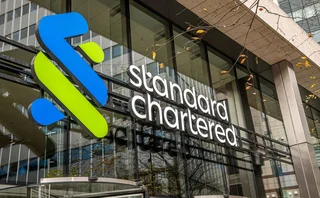

ING’s op risk charge jumped €228m in Q3
Op RWAs had been falling since Q3 2019
ING’s capital charge for operational risk jumped 8% over Q3, wiping out three quarters’ worth of savings.
Op risk-weighted assets (RWAs) hit €39.9 billion at end-September, translating to a capital charge of €3.2 billion. This reversed a series of quarter-on-quarter declines starting back in Q3 2019.
The bank said the Q3 increase was due to technical updates to its models. ING uses internal models allowed under the Basel Committee’s advanced measurement approach (AMA) to calculate its op risk capital requirement.
The spike in operational RWAs was offset by quarterly savings across all other risk categories. Credit RWAs dropped by €10.5 billion, thanks to favourable foreign exchange movements and a culling of risky exposures. Market RWAs fell by €2.3 billion.
ING’s total RWAs fell 3% over the quarter, to €312.3 billion.
What is it?
A bank’s minimum capital requirement equals 8% of its total risk-weighted assets (RWAs) for credit, market and operational risks.
Existing Basel Committee rules allow op RWAs to be calculated under the AMA using banks’ own internal models, which use the frequency and severity of past op risk losses to determine how much capital should be put aside to absorb potential future losses.
At end-2017, the committee scrapped the AMA and replaced it with a standardised measurement approach (SMA), under which firms will have to calculate their op risk using the standard-setter’s own formulae. The SMA will be phased in from January 2022.
Why it matters
ING has run into trouble with financial regulators in recent years, mainly over failings concerning its anti-money laundering (AML) practices.
Last quarter, some of these failings, and their accompanying fines, likely rolled into the calculation window used by its AMA model, pumping up op RWAs.
Further increases could be on their way. In its Q3 report, the Dutch bank said “[we have] experienced heightened scrutiny by authorities in various countries,” which may lead to new investigations and more fines.
ING may end up being grateful it took the higher op risk charge in Q3, when RWA tailwinds to credit and market exposures helped to offset them. Still, the higher charges are likely to stay for some time considering the bank’s recent loss history, putting pressure on its core capital ratio.
Get in touch
Sign up to the Risk Quantum daily newsletter to receive the latest data insights.
Let us know your thoughts on our latest analysis. Email louie.woodall@infopro-digital, or send a tweet to @LouieWoodall or @RiskQuantum. You can also get in touch via LinkedIn.
Tell me more
Shift out of models nets ING €8bn of sovereign RWA relief
Model review adds €13bn to ING’s RWAs
Only users who have a paid subscription or are part of a corporate subscription are able to print or copy content.
To access these options, along with all other subscription benefits, please contact info@risk.net or view our subscription options here: http://subscriptions.risk.net/subscribe
You are currently unable to print this content. Please contact info@risk.net to find out more.
You are currently unable to copy this content. Please contact info@risk.net to find out more.
Copyright Infopro Digital Limited. All rights reserved.
As outlined in our terms and conditions, https://www.infopro-digital.com/terms-and-conditions/subscriptions/ (point 2.4), printing is limited to a single copy.
If you would like to purchase additional rights please email info@risk.net
Copyright Infopro Digital Limited. All rights reserved.
You may share this content using our article tools. As outlined in our terms and conditions, https://www.infopro-digital.com/terms-and-conditions/subscriptions/ (clause 2.4), an Authorised User may only make one copy of the materials for their own personal use. You must also comply with the restrictions in clause 2.5.
If you would like to purchase additional rights please email info@risk.net
More on Risk Quantum
Commerzbank wager swells UniCredit’s modelled RWAs by 62.5%
Total return swaps on German shares inflate VAR and SVAR components
Consolidation of Arval exposures adds €20bn to BNP Paribas’ RWAs
Bank shifts exposures from soon-to-be retired equity IRB treatment to standardised approach
Russian loan liquidation lifts RBI’s risk density
Cash parked at sanctioned central bank carries higher capital requirements than original loans
CCPs’ skin in the game drops to historic low
Clearing members bear increasing load, analysis of 15 clearing houses shows
StanChart’s market RWAs hit eight-year high
Client-driven RWA deployment raises market risk exposure by $3.2 billion
Valley National sees surge in delinquent CRE loans in Q3
Bank’s net charge-off rate more than doubles as $114 million in CRE loans become past due
UBS logs three VAR breaches on legacy Credit Suisse positions
Bank risks higher capital charges amid market volatility and exit-related costs
HSBC’s China CRE provisions surge to cover one-fourth of book
Additional reserves and reduced exposure elevate ECL coverage for mainland portfolio








